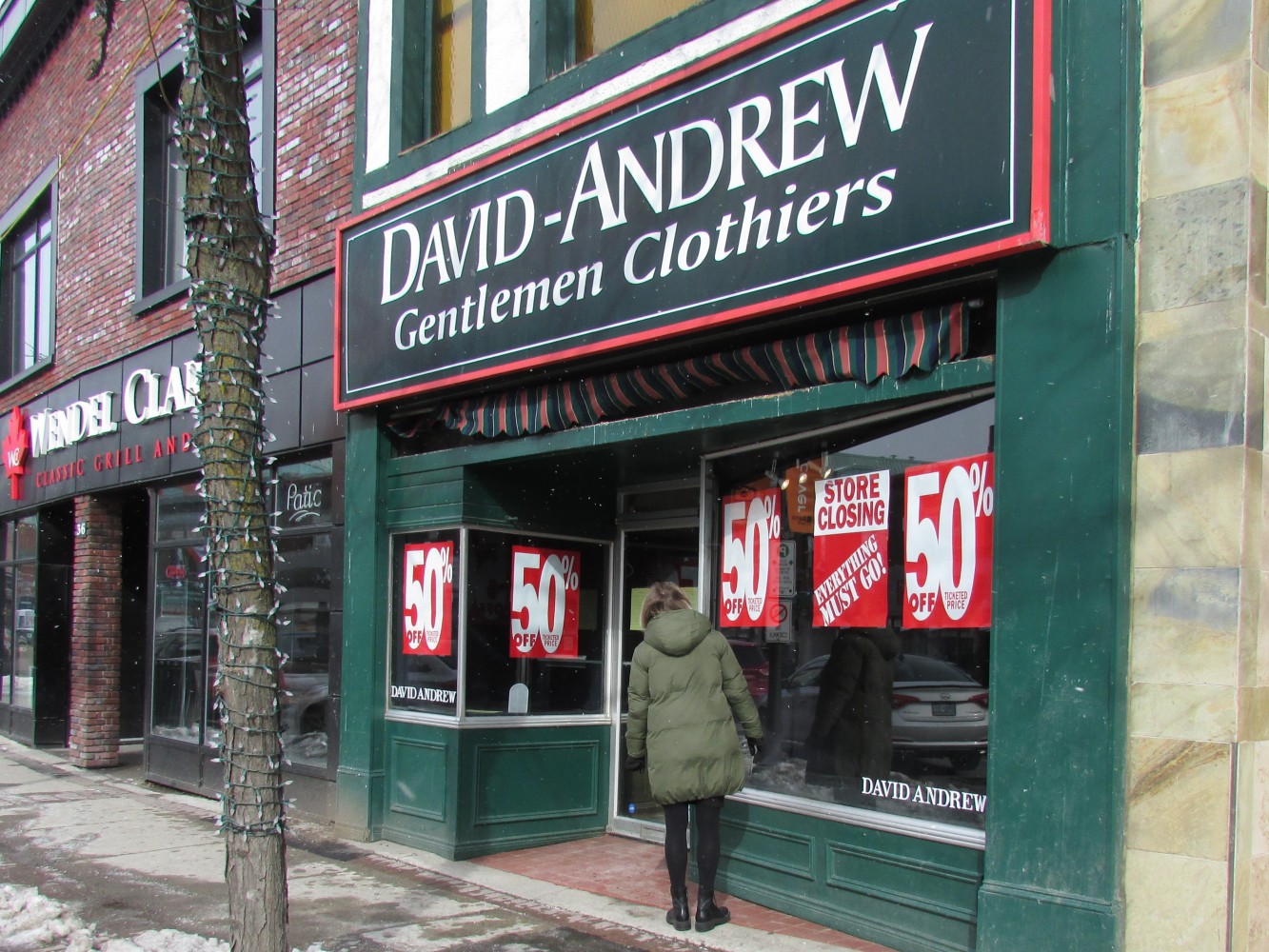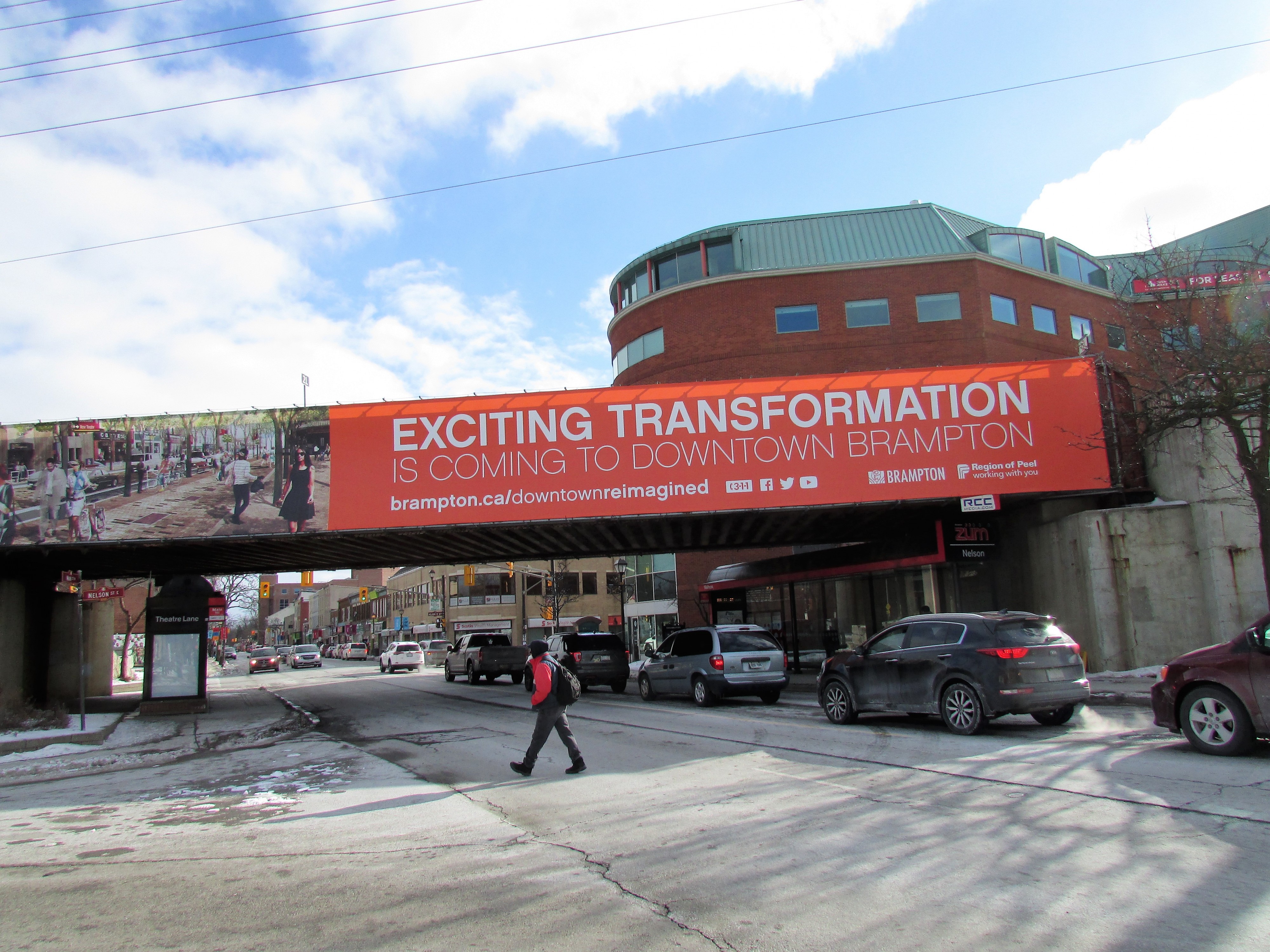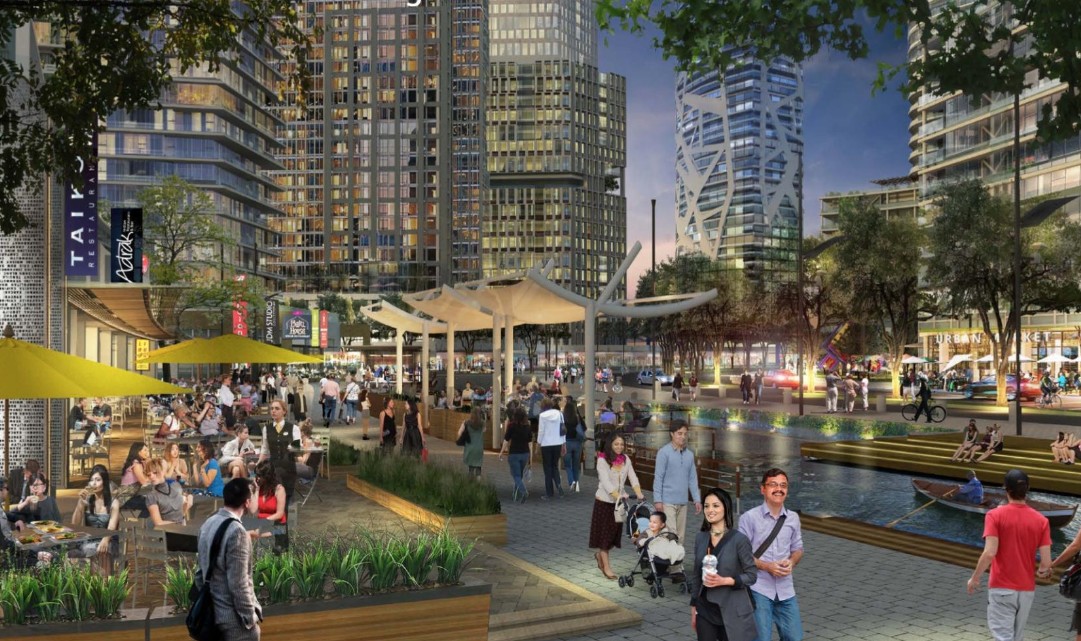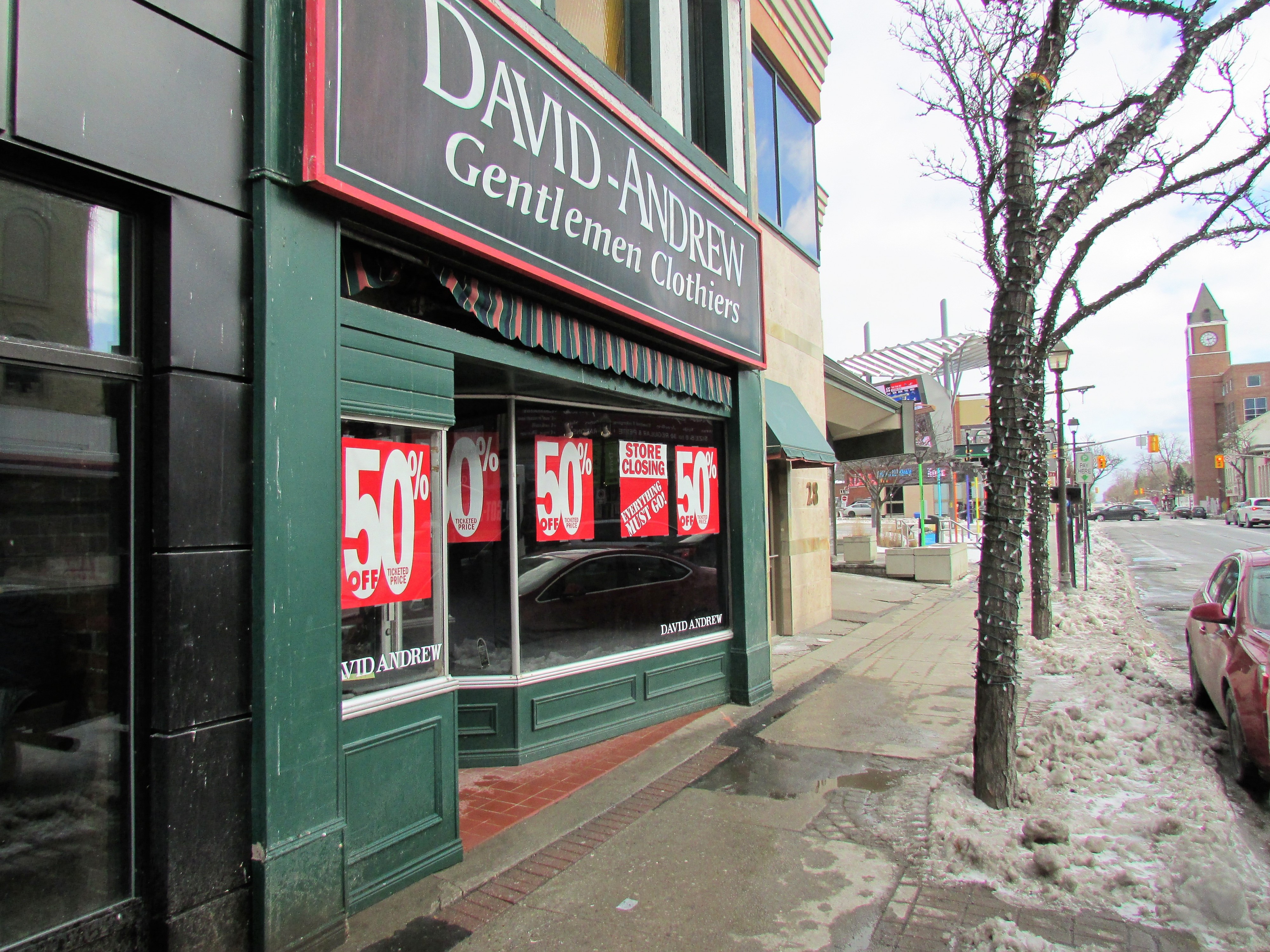
With the disruption of retail, Brampton needs a creative solution to save downtown
Why don’t we psychoanalyze cities like we do people?
Put them on the couch, and plumb the depths to find out why they struggle?
Why do some downtowns wither while others thrive?
As one downtown store owner told The Pointer this week: “I worry about the future of Brampton’s downtown. I don’t even know if I want to stay here anymore.”
While this business leader wants to remain anonymous, another is eager to be identified.
His name is Herman Custodio, owner of the photography studio at 53 Main Street North that bears his family name. The business has been located here since the mid-1980s.
The downtown has changed dramatically since then, and the direction is downwards.
In a recent feature in The Pointer, Custodio said bluntly: “The city has lost its identity.”
For a community of 600,000, and growing rapidly at the edges, that’s a troubling development. For retailers like Custodio, a long-time champion of the downtown and a former board member with Brampton Downtown Development Corporation (BDDC), the decline has been precipitous.
“The city has lost its beauty,” he said.
The downtown is reeling from recent store closures. The loss of three restaurants, Carve, Fellini’s, and La Capannina (the oldest of the three, founded in 1983), is a signal that something is wrong. A local media organ ran a story last year selecting the Top 5 restaurants in the city. A year later, two of five are gone.
The boarded-up storefronts along Queen Street near Main are a constant reminder that the city can’t retain its retailers.
The mood darkens still with news this past week that David-Andrew Gentlemen Clothiers (30 Main Street North) is closing after 41 years. A going-out-of-business sale continues as last-minute shoppers gut the store of its last contents.

It’s a bittersweet moment for Moe Bouchard who has worked as a salesman there since the early ‘80s. He has been so busy with the sell-off he has had few moments to put the end into context. He did, however, find a little time to talk with The Pointer.
He expressed frustration with the changing fortunes of retail. He thinks there are multiple reasons why shop owners are struggling to survive, but the onrush of e-commerce is not helping. He points out that the writing was on the wall over the holiday season when David-Andrew recorded its worst sales figures ever. It was a surreal time, he said, walking over to help a customer try on a blue-striped sports jacket, with a half-price sticker hanging from its sleeve.
David-Andrew is symbolic of what has happened to the core. A general consensus among retailers contacted by The Pointer was something fundamental has to change to attract shoppers back downtown, and stop its slow slide to irrelevancy.
But the opposite is happening. The city excitedly introduced its $33-million Downtown Reimagined project last year, a two-tiered plan to fix that what ails the infrastructure below the surface of Main Street (water mains) and beautify the area with streetscaping above.
The news was met with consternation by some local retailers. The project, with plans to tear up streets, threatened to disrupt the already struggling downtown for upwards of four years.
That was mixed with some good news. Council in December said yes to a proposed light rail transit line to run through the core. Meanwhile, Ryerson University had a satellite campus with thousands of students planned for downtown, and the federal government threw a cool $1.8 million into helping pay for the environmental assessment of Riverwalk, another urban renewal project.

But Reimagined was cancelled, for now, because of rising costs and uncertainty about the city’s historic subterranean waterways, Queen’s Park nixed its $90 million investment in Ryerson forcing the university to pull out of the campus plan, the chance of an LRT line ever being built downtown is iffy at best, and Riverwalk, which would cost hundreds of millions, might help fix the floodplain and pump up the downtown, but all bets are off until the money is found and Reimagined is taken off the shelf.
Is it possible Brampton’s downtown will ever again be a hive of activity like it was in the halcyon days of the 1980s when the Custodios first settled in the city and shoppers were plentiful? Vacancy rates, back then, sat near zero.
Directly across the road from David-Andrew was Carve, a restaurant that featured a roof-top patio, and Fellini’s, a popular eatery that, as the name suggested, served Italian with a flare. The comings and goings of retailers in the downtown has been an everyday occurrence over the past decade, and despite the best efforts of the local BIA and its predecessor the BDDC (created in 2005 and abandoned a decade later), the downtown has long struggled.
The charge was that both organizations were too political (there were four councillors on the BIA board), and never showed much return on investment.
Which begs two fundamental questions: What happens if Reimagined is completed and few if any retailers survive the four-year disruption? Do downtowns even matter anymore?
It’s been estimated recently that 100 shops along Eglinton Avenue have or soon will go out of business because of construction for Toronto’s crosstown LRT. Would Brampton retailers suffer a similar fate?
But the alternative, allowing the downtown’s decline without revitalization projects such as Reimagined and a transformative LRT, would guarantee the area’s slide into American-style urban decay across much of the city-centre. South of the border, cities like Cleveland and Detroit have successfully turned the trend around, but only by tearing things down before building back up.
Hippodamus of Miletus (born 500 B.C.) was the first city planner to incorporate geometric gridiron schemes into his design work. He boxed people in, so to speak, and moved away from the higgledy-piggledy streetscapes that pockmarked Greek cities. He gave places form and substance.
The ancient Greek cities commonly began with a public square, or agora. They were surrounded by market stalls and filled with the sights and sounds and smells of urban life. The agora became the symbol for the free exchange of goods. As time progressed, the Greeks began to redecorate the agora and made them people-friendly places – symbolic of a growing democratic spirit. Pericles even revived the Acropolis so it represented the possibilities of urban renewal.
Thousands of years later, the lessons seem to have been lost. William Whyte, founder of the Street Life Project in the U.S., once said the emphasis in building a city shouldn’t be on design, but creating “a place.”
There are plenty of places in the downtown: The Rose Theatre, City Hall, Gage Park, PAMA, and other historic buildings. The city’s 2040 Vision, an inspiring plan to remake much of Brampton while accommodating another entire city-load of residents, is replete with beautiful renditions of a perfect downtown, filled with people, stores, public transit options, cafes, galleries, and all the fine-grained development that is featured in urban centres that work. But will these renditions become mere artifacts – an impossible dream if there is no retail left?

Downtown merchants have long fought the small size of the urban centre, the narrow sidewalks and the lack of a commonality. The best downtowns attract a wide mix of those that create a city’s eclectic demographic, the artists rubbing shoulders with office workers and families mingling with young professionals and students in a cosmopolitan buzz. These attributes were caught beautifully in Adam Gopnik’s Naked Cities: the death and life of Urban America, a story in The New Yorker magazine. The Canadian believes when downtowns are overtaken by the car, disaster follows. Brampton is now the poster boy. Queen Street is left partially opened during Saturday’s Market day, curbing what should be a car-free experience. The retailers along the thoroughfare are distractions for east-west commuters now jammed along the pavement during the morning and late-afternoon rush, a gridlocked scene that plays out daily across the city, on its poorly designed connector-routes that provide the only exit and entry for its poorly designed subdivisions.
Why are jurisdictions like Montreal and Vancouver and even Winnipeg (about the same size as Brampton and experiencing an urban renaissance after decades of neglect) home to vibrant downtowns, and even smaller cities like Saint-Hyacinthe, Quebec, Stratford, even tiny Unionville, north of Toronto, a draw for people and shoppers?
Custodio was willing to give the Reimagined project a chance if it meant a new-look downtown. He was an early advocate for the LRT, too, and said the city should be on the constant lookout for other initiatives that might energize the core. He thought the building of the Rose Theatre and Garden Square might help propel the city forward, but they have not been the catalyst for the kind of changes they promised.

He said news that the Ford government at Queen’s Park had pulled out of supporting Ryerson’s campus in downtown Brampton left a sour taste in the mouth of downtown retailers, and has caused a real sense of hopelessness.
The irony in all this is that when Orangeville was thinking of re-doing its rather dull downtown in the 1980s, it sent a delegation to Brampton to study our city-centre and see why it was so successful. Both cities featured lovely older buildings, but Brampton was a-buzz with retail activity anchored by a new City Hall. Custodio remembers how difficult it was to find any kind of space in the core, and it took time before his family could secure its current location. Brampton was the model downtown for Orangeville, but in an ironic twist, many Bramptonians now travel north to the city every weekend for a casual day of shopping, antiquing and coffee at a quaint sidewalk cafe.
A series of poor planning decisions and social factors have contributed to Brampton’s hollowing out. Development was pushed to the outer parts of the city, featuring big-box retailers and sprawling parking lots around malls and strip-plazas that pock every enclave that’s developed across Brampton. For two decades little was done to attract the diverse community members settling in the city to the downtown core, as dining options, retail and cultural programming at venues such as the Rose Theatre failed to reflect the immense diversity taking shape across the rest of Brampton.
Attracting those residents to downtown, other than to pay a ticket at City Hall or line up for some sort of license there, has been a challenge, although the Rose and PAMA are now featuring cultural offerings that appeal to a much wider demographic in the city.
Brampton’s façade program has offered retailers a chance to beautify their buildings and attract shoppers. Today a special Main Street grant is available through the Ontario BIA to help retailers promote their businesses. One downtown city retailer was accepted and is using the $5,000 grant to promote her store. Digital Main Street is another partnership with the Ontario BIA that helps small Main Street businesses improve technologies to better promote themselves online. The payoff of $2,500 might be small, but in the competitive retail world, every dollar counts.
The downtown retail community is both blessed and cursed by its surroundings. While the sidewalk traffic thins considerably in bad weather, and parking is limited, the opening of the Bramalea City Centre, and other malls with climate-controlled environments long ago changed the shopping habits of city residents – although even malls are struggling to meet head-on the e-commerce boom, and a lack of independent retailers – both irrelevant in places like downtown Unionville with its small cafes and leafy feel, which attract people looking for a different type of experience altogether.
There was a bittersweet feel as The Pointer visited the final days in the life of David-Andrew this week. One of its founders, Dave Bouchard, and his brother Moe, didn’t foresee the day when this urban icon would close its doors, but a shrinking number of shoppers forced their hands.
The city is revamping its Economic Development Office, and a new masterplan to increase business prospects both inside and outside the city borders will be unveiling in early April. Will that include a plan to revitalize the downtown? Mayor Patrick Brown didn’t say so at his state-of-the-city address this past week.
Even though there is a light dusting of offices downtown, along with condos, and some retail, there are no hotels, and the shopping district is shrinking. There’s little reason for potential shoppers to come to the city from the ‘burbs and outside jurisdictions.
E-commerce is not a disruption. It is not a trend or fad or niche segment of the retail market. It is a juggernaut that will likely replace the entire retail industry as we have known it. According to the online site Statistica, global online sales totalled about $2.8 trillion last year. By 2021 that figure is projected to reach almost $5 trillion. Like David-Andrew, others cannot compete with that sort of staggering force.
Habits are changing. More screen-time, more time spent at work and on vacation to repair from the countless hours spent at work. Less time, or inclination, for activities like shopping on Main Street and going downtown for a coffee. There’s a drive-through Tim’s on every corner and a Starbucks to-go waiting inside every suburban strip-mall.
Except for the weekend Farmers Market, which will either die or be relocated during the Reimagined project, if the plan ever happens, the city seems to have no game plan to save its core retailers from slow strangulation.
There are no major draws like the Shakespearian festival that turned a sleepy southwestern Ontario city like Stratford into a rich, cultural and retail giant.
Maybe an LRT line would revitalize the downtown like it has in Kitchener and places like Portland. But Queen’s Park is tightening its money belt, and the claw-back of Ryerson funding is only one of many austerity moves. With Toronto and York Region already fighting over who gets funding for their respective higher-order transit projects and Premier Doug Ford unwilling to guarantee the Hurontario-Main LRT will go forward, the plan could be little more than smoke and mirrors.
The future of Brampton’s downtown is tied to a whole bunch of maybes.
Maybe Reimagined will restore it to former glory – even after much tumult.
Maybe a completed Riverwalk will spur urban renewal.
Maybe the LRT will be built, and retailers will trail in behind.
Maybe a new-look Economic Development Office under a new-look, energetic mayor will make a full-court press to build a sustaining model that includes thriving downtown merchants.
And maybe e-commerce won’t crush the centuries-old tradition of physically shopping in stores that aren’t virtual.
The BDDC failed to re-right the retail ship in the city’s core.
The current BIA is offering inadequate help to solve a much larger problem.
Brampton’s downtown was once a model for other jurisdictions.
Today, there is little there.
Nowhere to shop for baked-goods or groceries, or do lunch at a sidewalk café. Few options to browse exhibits featuring local artists. Nowhere to get a taste and smell and feel for a city’s downtown.

One of its great anchor stores, David-Andrew is about to close, its shelves picked clean by shoppers looking for a last-second deal.
Its long history of service and its list of dedicated customers it served over the years, will fade away like a blue shirt left out too long in the summer sun.
It’s a sad day when businesses that once defined a city die. The question now, is this: which one is next?
During his run for mayor, Brown and his wife-to-be Genevieve Gualtieri moved to Brampton’s downtown. They were frequent visitors to the restaurants and coffee shops that have survived. The mayor-to-be and his supporters loved to visit the Farmers Market every Saturday morning to scare up votes for his election. Brown bought a bike at the local bike shop. He met supporters at the local coffee shops. He was a frequent shopper at David-Andrew. That’s where he bought the tuxedo he wore on his wedding day.
It’s now closing after serving two generations of Brampton residents.
That should be a stark reminder to the mayor and all of us that the core problem facing the city might just start in its core. When the centre collapses, everyone gets pushed out to the edges, existing apart from one another, as the city loses a large part of its identity.
Brampton’s downtown needs to be saved. Leaders need to bring a downtown university campus there, and the LRT and the Riverwalk plan and Reimagined. It’s simplistic and naïve to write this with no plan, while the city and Queen’s Park face a dire financial picture.
But the new Economic Development Office is a fresh start, with fresh faces. Vision 2040, Reimagined, the Riverwalk and a Transportation Master Plan updated in 2015, might represent aspirational goals. But isn’t that the point?
Yes, downtowns matter. They define a city. And if some retail shops come and go, others anchor themselves into the collective consciousness of a city and seal themselves in the hearts and minds of those who have frequented them. These are the types of stores like David-Andrew.
When they die, if nothing is done to replace them, a little piece of this city dies too.
Submit a correction about this story


